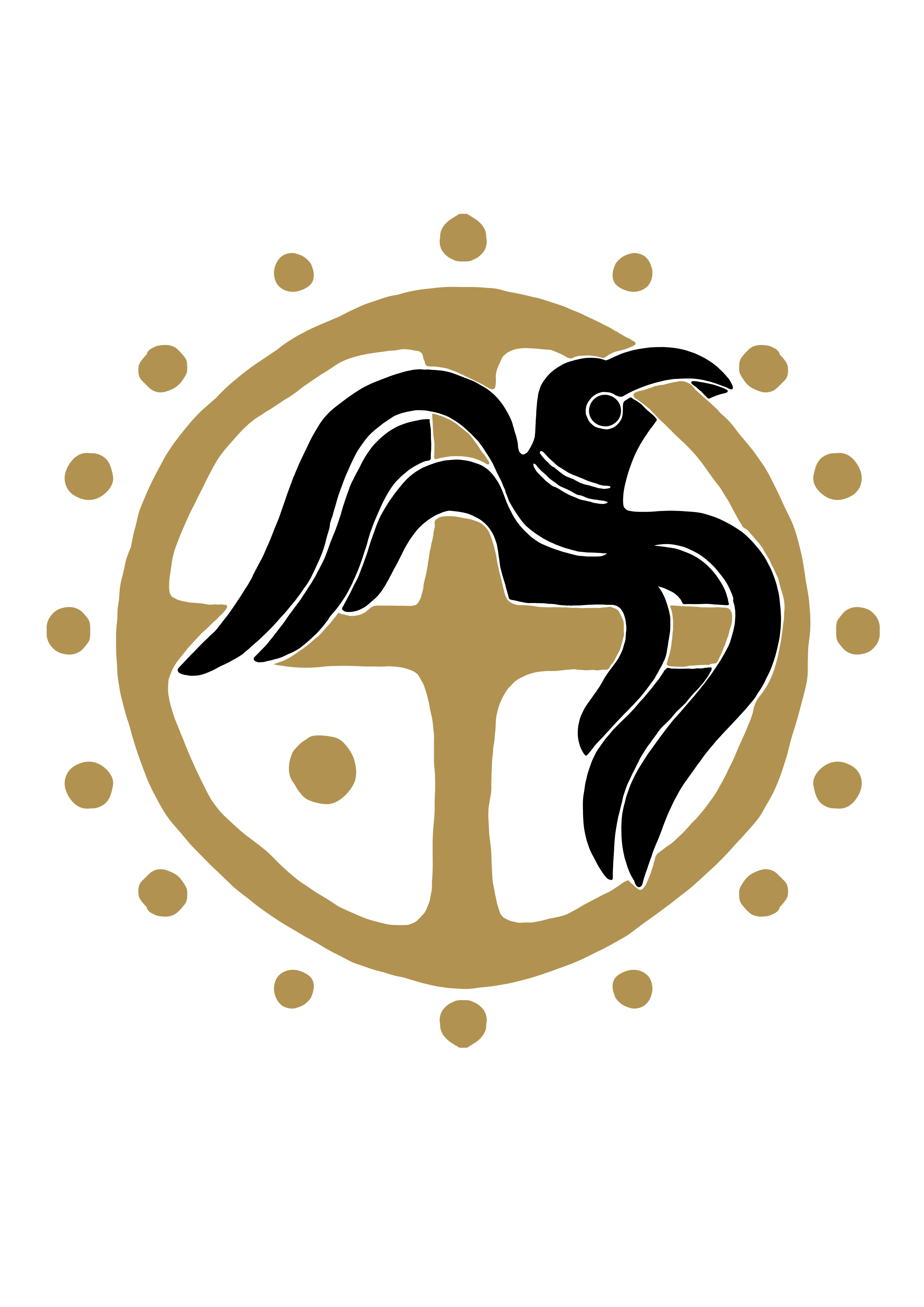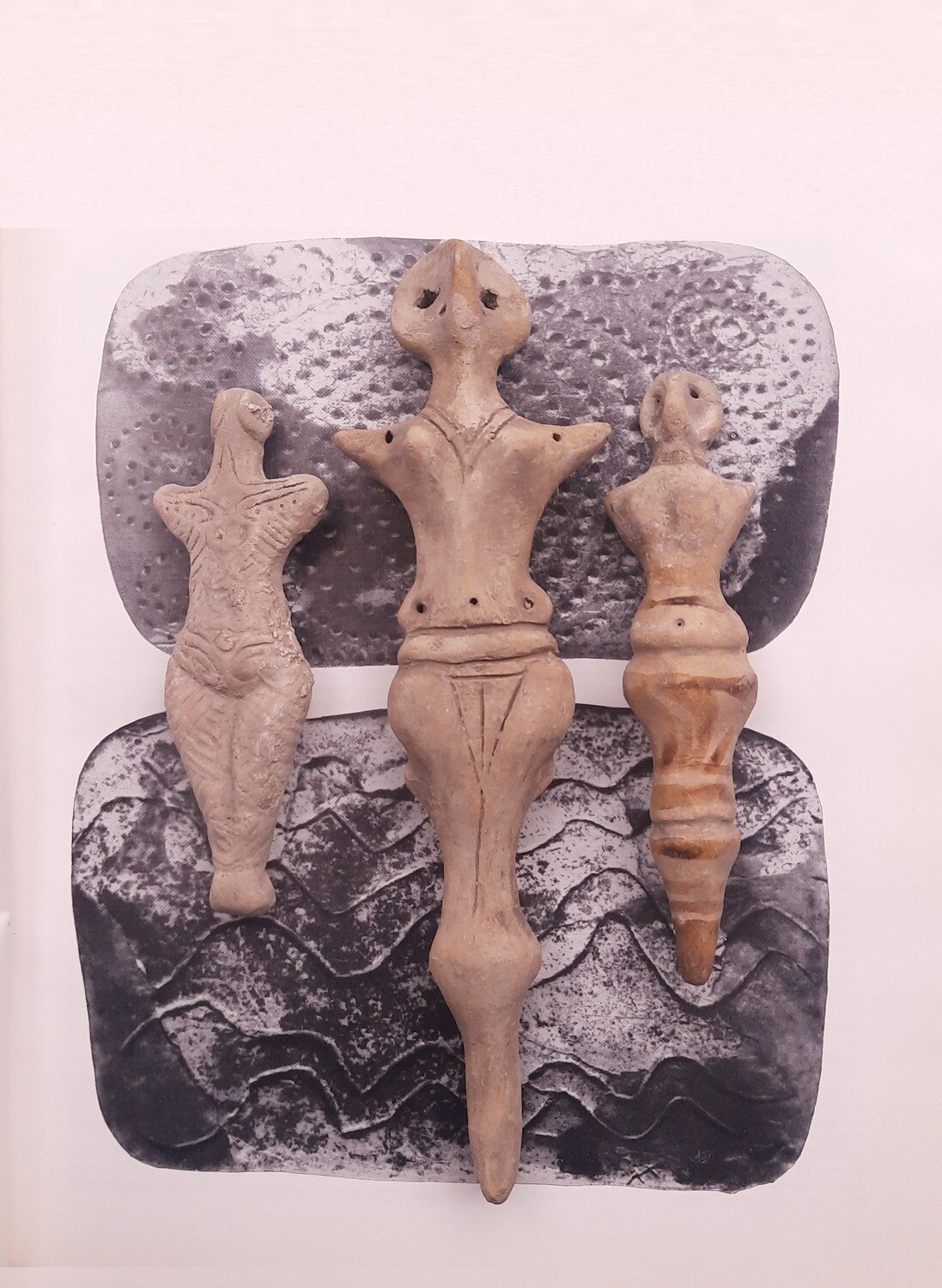Handmade Old Europe Great Mother Goddesses collection, terracotta, unique ancient look replicas, handmade artworks
$149.00
On Sale
Neolithic Age Mother Goddess Terracotta, First Gods of Old Europe (Museum Quality Replica)
In stock: 2 available
Product Details
Brand: Z-Rune Norse Pagan Arts Workshop
PAGAN ROOTS: Old Europe Great Mother Goddesses collection, terracotta, unique ancient look replicas, handmade artworks
1. Central Piece is Classical type Old Europe / Neolithic / The Cucuteni–Trypillia culture Great Mother Goddess Terracotta (Votive Figurine)
Size: H. 23 cm / 9 Inches - beautiful - Solid Piece.
2. Left one Figurine is very special - shows the Goddess in Ritual Paint or Tatooed Body.
Size: H. 13 cm / 5 Inches
3. Right one is rare type painted with Ochre paint used in Prehistoric times in rituals
Size: H. 15 cm / 6 Inches.
Material: Terracotta / Fired Clay / Original Historical Look Patina
Neolithic Terracottas replicas has ancient look, all pieces are unique artworks
This type of Mother Goddess figurines is typical to the Cucuteni–Trypillia culture
Replicas inspired by Original artefacts
Material: Fired Clay, Terracotta
Other common Name: Neolithic Venus, Gods and Goddesses of Old Europe. Great Mother Goddess.
This artworks are unique and 100% handmade. The patina is very close by structure to the original Prehistoric Mother Goddesses figurines patina you can find in museums.
Collectors addition. Art pieces came from Algiz-rune Pagan Arts Workshop (Europe)
Can be used as Altar piece and in rituals.
The Cucuteni-Trypillia culture, which thrived in the Neolithic period (approximately 5500-2750 BCE) in what is now modern-day Eastern Europe, produced a remarkable range of ceramic artifacts. Among the most notable are the ceramic figurines commonly referred to as "Mother Goddesses." These figurines depict female forms and are believed to have held religious and symbolic significance within the culture.
Here are some interesting aspects about the Cucuteni-Trypillia ceramic Mother Goddesses:
Abundance and Fertility: The Mother Goddess figurines are often depicted with exaggerated features related to fertility and abundance. They typically have large breasts, swollen bellies, and prominent hips, emphasizing the association with motherhood and fertility.
Varied Representations: The figurines come in various shapes, sizes, and styles. Some are small, handheld figurines, while others are larger statuettes. They exhibit diverse poses, including standing, sitting, or kneeling, and sometimes depict multiple figures intertwined.
Elaborate Ornamentation: The figurines are intricately decorated with elaborate patterns, including incised lines, geometric motifs, and sometimes even painted details. These decorations may represent clothing, tattoos, jewelry, or body paint.
Ritual and Spiritual Significance: The Mother Goddess figurines are believed to have played a role in religious rituals and ceremonies. They are often found in burial sites, suggesting that they may have been associated with beliefs in the afterlife or the journey to the underworld.
Symbolism of Life and Death: The exaggerated features of the figurines, particularly their swollen bellies, have led to interpretations that connect them to both birth and death. They may represent the cycle of life, regeneration, and the interconnectedness of the human experience.
Craftsmanship and Artistic Expression: The Cucuteni-Trypillia culture was known for its advanced pottery techniques, and the creation of these figurines showcases their skilled craftsmanship and artistic expression. The level of detail and the range of styles found in the figurines demonstrate the cultural significance of these objects.
The Cucuteni-Trypillia ceramic Mother Goddesses provide valuable insights into the religious, symbolic, and artistic aspects of this ancient culture. They offer glimpses into the beliefs and values of the people who created them, highlighting the importance of fertility, abundance, and the cycle of life.
#MotherGoddess # terracotta #figurine #sale #offer #oldgods #altaridol #great #mother #goddess #Cucuteni #Trypillia
1. Central Piece is Classical type Old Europe / Neolithic / The Cucuteni–Trypillia culture Great Mother Goddess Terracotta (Votive Figurine)
Size: H. 23 cm / 9 Inches - beautiful - Solid Piece.
2. Left one Figurine is very special - shows the Goddess in Ritual Paint or Tatooed Body.
Size: H. 13 cm / 5 Inches
3. Right one is rare type painted with Ochre paint used in Prehistoric times in rituals
Size: H. 15 cm / 6 Inches.
Material: Terracotta / Fired Clay / Original Historical Look Patina
Neolithic Terracottas replicas has ancient look, all pieces are unique artworks
This type of Mother Goddess figurines is typical to the Cucuteni–Trypillia culture
Replicas inspired by Original artefacts
Material: Fired Clay, Terracotta
Other common Name: Neolithic Venus, Gods and Goddesses of Old Europe. Great Mother Goddess.
This artworks are unique and 100% handmade. The patina is very close by structure to the original Prehistoric Mother Goddesses figurines patina you can find in museums.
Collectors addition. Art pieces came from Algiz-rune Pagan Arts Workshop (Europe)
Can be used as Altar piece and in rituals.
The Cucuteni-Trypillia culture, which thrived in the Neolithic period (approximately 5500-2750 BCE) in what is now modern-day Eastern Europe, produced a remarkable range of ceramic artifacts. Among the most notable are the ceramic figurines commonly referred to as "Mother Goddesses." These figurines depict female forms and are believed to have held religious and symbolic significance within the culture.
Here are some interesting aspects about the Cucuteni-Trypillia ceramic Mother Goddesses:
Abundance and Fertility: The Mother Goddess figurines are often depicted with exaggerated features related to fertility and abundance. They typically have large breasts, swollen bellies, and prominent hips, emphasizing the association with motherhood and fertility.
Varied Representations: The figurines come in various shapes, sizes, and styles. Some are small, handheld figurines, while others are larger statuettes. They exhibit diverse poses, including standing, sitting, or kneeling, and sometimes depict multiple figures intertwined.
Elaborate Ornamentation: The figurines are intricately decorated with elaborate patterns, including incised lines, geometric motifs, and sometimes even painted details. These decorations may represent clothing, tattoos, jewelry, or body paint.
Ritual and Spiritual Significance: The Mother Goddess figurines are believed to have played a role in religious rituals and ceremonies. They are often found in burial sites, suggesting that they may have been associated with beliefs in the afterlife or the journey to the underworld.
Symbolism of Life and Death: The exaggerated features of the figurines, particularly their swollen bellies, have led to interpretations that connect them to both birth and death. They may represent the cycle of life, regeneration, and the interconnectedness of the human experience.
Craftsmanship and Artistic Expression: The Cucuteni-Trypillia culture was known for its advanced pottery techniques, and the creation of these figurines showcases their skilled craftsmanship and artistic expression. The level of detail and the range of styles found in the figurines demonstrate the cultural significance of these objects.
The Cucuteni-Trypillia ceramic Mother Goddesses provide valuable insights into the religious, symbolic, and artistic aspects of this ancient culture. They offer glimpses into the beliefs and values of the people who created them, highlighting the importance of fertility, abundance, and the cycle of life.
#MotherGoddess # terracotta #figurine #sale #offer #oldgods #altaridol #great #mother #goddess #Cucuteni #Trypillia
The use of ochre is particularly intensive: it is not unusual to find a layer of the cave floor impregnated with a purplish red to a depth of eight inches. The size of these ochre deposits raises a problem not yet solved. The colouring is so intense that practically all the loose ground seems to consist of ochre. One can imagine that the Aurignacians regularly painted their bodies red, dyed their animal skins, coated their weapons, and sprinkled the ground of their dwellings, and that a paste of ochre was used for decorative purposes in every phase of their domestic life. We must assume no less, if we are to account for the veritable mines of ochre on which some of them lived...
The Ancient Picts were said to paint themselves "Iron Red" according to the Gothic historian Jordanes. Frequent references in Irish myth to "red men" (Gaelic: Fer Dearg) make it likely that such a practice was common to the Celts of the British Isles, bog iron being particularly abundant in the midlands of Ireland.
Ochre has uses other than as paint: "tribal peoples alive today . . . use either as a way to treat animal skins or else as an insect repellent, to staunch bleeding, or as protection from the sun. Ochre may have been the first medicament."
Handmade Old Europe Great Mother Goddesses collection, terracotta, unique ancient look replicas, handmade artworks
Display prices in:USD

